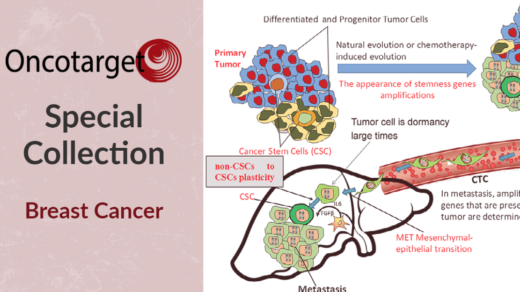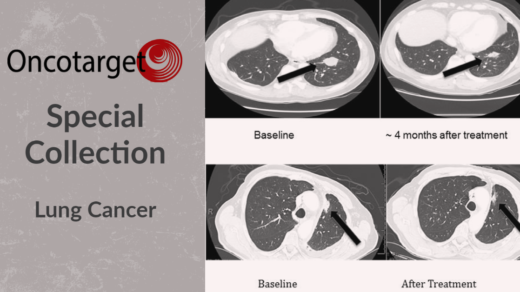Young people living in the Andes Mountains are disproportionately affected by hepatocellular carcinoma compared to other youth around the world. Researchers conducted a study to better understand the cause.

The Trending with Impact series highlights Oncotarget publications attracting higher visibility among readers around the world online, in the news, and on social media—beyond normal readership levels. Look for future science news and articles about the latest trending publications here, and at Oncotarget.com.
—
Andean people live in sparsely populated regions in the Andes Mountains of South America. It is the longest mountain range in the world; spanning seven countries from southern Peru to southern Argentina. Due to the high elevations (averaging 13,000 feet; peaking at 22,834 feet), these areas are known for such low oxygen levels that Andean people have adapted physiologically to the extreme conditions.
Around the world, hepatocellular carcinoma (HCC) is the main form of primary liver cancer and commonly affects older patients after they have had prolonged liver disease. However, among Andean people, half of the total patients who develop HCC are adolescents and young adults. Researchers—from Sorbonne Université, Institut Pasteur, Université de Rennes, and Université de Toulouse in France, and the Instituto Nacional de Enfermedades Neoplásicas in Peru—conducted a study to better understand HCC in Andean people.
“To deepen our understanding of the molecular determinants of the disease in this population, we conducted an integrative analysis of gene expression and DNA methylation in HCC developed by 74 Peruvian patients, including 39 adolescents and young adults.”
The Study
“The 74 Peruvian patients with HCC included in the present study carried mitochondrial DNA (mtDNA) haplotypes of the four ancestral lineages (A–D) shared by Indigenous American populations (Figure 1A and Table 1) [23].”
The researchers retrospectively conducted transcriptome profiling of patient samples from 74 Peruvian patients with HCC. They compared gene expression data (after batch-effect removal) and found that Peruvian HCC is characterized as a distinct molecular subtype. This, now referred to as the “Amerind signature,” identifies Peruvian HCC as a distinct phenotypic cluster.
“A 961 gene signature was defined (hereinafter referred to as “Amerind signature”), of which 806 were upregulated and 155 downregulated in Peruvian HCC (Figure 3A and Supplementary Table 4).”
Methylome profiling was also conducted by the researchers to show the dynamics of DNA methylation marks, which revealed that Peruvian HCC is associated with a genome-wide hypermethylation pattern. They explain that DNA hydroxymethylation also represents a relevant epigenetic mark in Peruvian HCC. In addition, the researchers found evidence that Peruvian HCC tumor cells have a weaker retinoid signaling signature, which opens the door to potential therapeutic targets.
“The genomic analysis of Peruvian HCC evidenced a weaker retinoid signaling signature in tumor cells, which could pinpoint novel targets and drugs for anticancer targeted therapy (Figure 1C and Supplementary Table 1) [45]. We hypothesized that this weaker retinoid signaling could be responsible for the increased proliferation; hence, the pharmacological response to RA should antagonize this process.”
Conclusion
After comparing this sample of patients with Peruvian HCC with other HCC tumors from other countries around the world, molecular divergence in Peruvian HCC was demonstrated by showing “hierarchical clustering relying on a large and meaningful gene expression signature.” The researchers do not yet know if these differences are due to external/geographic or genomic factors.
“Whether this molecular phenotype is due to anthropological specificities embedded in genome architecture, to extrinsic etiological cues, or to subtle interplays between both components remains to be ascertained.”
With this being said, the researchers believe that this study stresses the need to carefully consider the potentially prominent roles of human genomic architecture and biogeography when it comes to cancer and underreported minorities and Indigenous patients, especially in low- and middle-income countries. They are forthcoming about limitations in their study and mention having analyzed a fairly small sized cohort. Importantly, the findings from this study create a case for developing therapeutics that are tailored to this new molecular subtype of HCC.
“The present study establishes a foundation for the dissection of the functional importance of RA-mediated epigenetic control in HCC and therapeutics tailored to patients with Indigenous American ancestry.”
Click here to read the full scientific study, published in Oncotarget.
—
Oncotarget is a unique platform designed to house scientific studies in a journal format that is available for anyone to read—without a paywall making access more difficult. This means information that has the potential to benefit our societies from the inside out can be shared with friends, neighbors, colleagues and other researchers, far and wide.
For media inquiries, please contact media@impactjournals.com.



